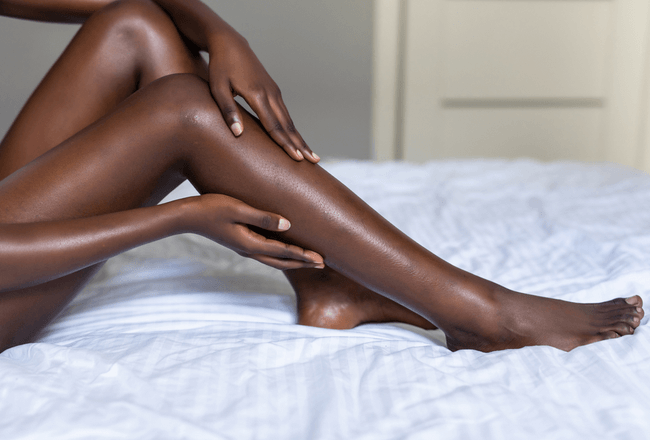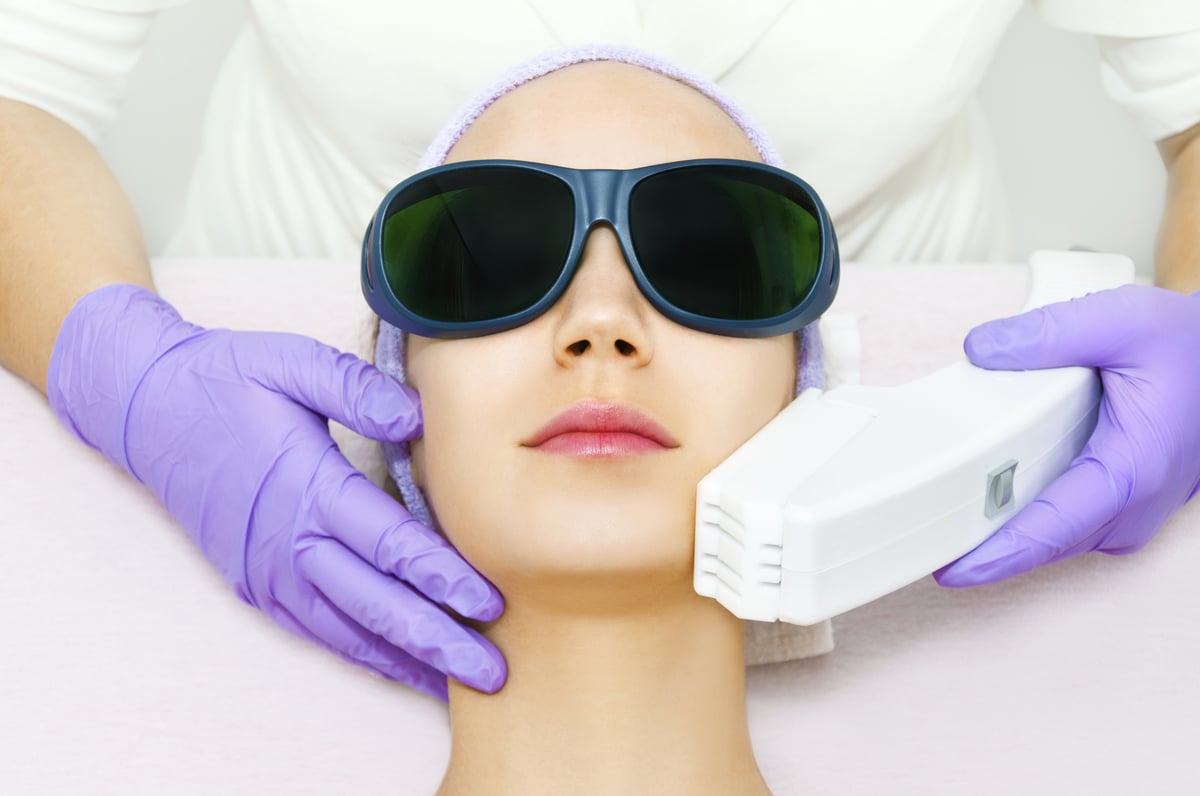Table Of Content

A lot of misconceptions exist about what laser hair removal is and what it can and can’t do. In this video, board-certified dermatologist Dr. Carolyn Jacob separates fact from fiction. If you choose to use a home laser hair removal device, follow the instructions that come with the device to help reduce the risk of injury, especially eye injuries. Thankfully, YAG laser hair removal is here to help solve that dilemma—and it's becoming an increasingly popular solution. We spoke with board-certified dermatologists DiAnne Davis, MD, and Marisa Garshick, MD, to learn more about this dark-skin-friendly method of hair removal. For those who have begun their research, you've probably heard laser hair removal providers or friends who have gone through with it say that it's painless.
Laser Treatments to Avoid

Some hair will grow back, but it’s usually lighter and thinner than before. Shave the area that will be treated two to three days before a treatment. Laser hair removal treatments won’t work on areas where the hair is longer than a grain of rice. After treatment begins, avoid waxing, tweezing and plucking hair in the treated areas.
SS: What happens during an initial laser hair removal appointment?
According to Dr. Charles, no matter the amount of melanin in your skin or how light or dark your complexion is, you can get laser hair removal. "But the people that tend to do the best have coarse, thick hair and darker hair, and that's because the light source in the laser tends to see that hair the best, so it picks up the hair and it really zaps it," he says. According to Dr. Charles, laser hair removal is very safe with minimal side effects, "assuming that the person doing it is using the right laser and understands the mechanics of treating darker skin," he says. But many who once felt a need to shave daily say the minimal upkeep has been well worth it.
Will I need multiple treatments?
Since the treatment only targets the pigment of the dark hair, laser hair removal won’t affect the surrounding skin of the treatment area. This also makes the treatment more effective for patients with dark hair and light skin. Patients with dark skin tone or light hair color may still try this treatment, but it’s best to consult with a doctor first to find out if they have the appropriate laser devices for your skin type or hair type. Aesthetic lasers target water, red hemoglobin, or brown melanin in the skin. Skin types IV to VI have a higher concentration of melanin, which means there is a greater risk of damage if the laser is used incorrectly.
After your session, you may experience minor bumps on your skin due to inflammation of the hair follicles, "but those typically go away within a day or so," says Dr. Charles. He adds that redness is also common, and he tends to give people a mild topical steroid to use for a few days following the session in order to reduce it. Speaking from personal experience, providers typically offer aloe vera gel to soothe the skin immediately after performing treatment on each area.
"To reduce any redness or swelling after treatment, it is recommended to apply a cool compress, aloe vera, and topical corticosteroids morning and evening for five days post-treatment," says Murphy. "This can be aloe vera, vitamin E, vitamin K, or hydrocortisone 1 percent over the counter," he explains. One of the standout features of laser hair removal is its precision. The laser targets hair follicles without affecting the surrounding skin, ensuring that only the unwanted hairs are dealt with. When reviewing at-home laser hair removal tools, we referenced the device manuals to compare specs including expected service lifetime and maximum energy output, as well as features like automatic skin tone sensing. We tried the skin contact sensor on each model to check that it would only flash when in contact with skin.
Q: Is laser hair removal a permanent hair reduction treatment?
With laser hair removal, hair growth is drastically reduced or even eliminated after a few sessions. This means fewer products to buy, fewer salon visits, and more money in your pocket. Consult with a derma clinic or a laser specialist who has experience with diverse skin types to ensure the safest and most effective treatment. Improper laser settings or using the wrong type of laser can increase the risk of post-inflammatory hyperpigmentation, a condition where the skin becomes darker in treated areas. While laser hair removal can significantly reduce hair growth, it’s considered semi-permanent.
Products & Services
I Got Brazilian Laser Hair Removal On My Pubic Area — Here's My Honest Review - Women's Health
I Got Brazilian Laser Hair Removal On My Pubic Area — Here's My Honest Review.
Posted: Fri, 17 Nov 2023 08:00:00 GMT [source]
Use a razor (like one of the options below) to shave the areas being lasered within 24 hours of your appointment and arrive to your appointment with clean, dry skin. Laser hair removal is expensive, but going in for a treatment might not be high on a list of priorities at the moment. While at-home devices do exist for a fraction of the cost and for better convenience, both Downie and Henry wouldn't recommend them for dark skin. Treating acne scars on dark skin requires special considerations. Improper treatment can result in permanent damage to the skin without improving the scar texture.

The Relationship Between Lasers & Skin Tone
I haven't gotten laser all over my body, but can attest that there are definitely areas that are way more sensitive than others. There are no words to describe what that feels like, and I recommend going to your happy place, taking deep breaths, and squeezing the shit out of the stress balls. For more than 170 years, Town & Country has been the trusted source for influence, taste, elegant living, and the finest things in life.
To explain more about the developments in laser hair removal for dark skin, we turned to Taylor Bagby, an Aesthetic Nurse Specialist at SkinSpirit’s Palo Alto location. But there are no large studies comparing how effective these devices are compared with laser hair removal done at a doctor's office. Common treatment locations include legs, armpits, upper lip, chin and the bikini line. However, it's possible to treat unwanted hair in nearly any area, except the eyelid or surrounding area. Laser hair removal is a medical procedure that uses a concentrated beam of light (laser) to remove unwanted hair. "Avoid waxing, avoid plucking, avoid electrolysis to the area [being treated] for at least three or four weeks" prior to your sessions, adds Dr. Charles.
The damage caused by improper laser treatments is often permanent and ranges from burns and scars to hypo- and hyperpigmentation. Although laser hair removal effectively delays hair growth for long periods, it usually doesn't result in permanent hair removal. Multiple laser hair removal treatments are needed for initial hair removal, and maintenance treatments might be needed as well. Laser hair removal is most effective for people who have light skin and dark hair, but it can be successfully used on all skin types. At Ethos Spa, we want our patients to regain their confidence in their own bodies.
Hair transfers heat to the hair follicles and destroys them, so hair can’t grow. Additional side effects include hyperpigmentation, darkening of the skin, or hypopigmentation, lightening of the skin. For these reasons, it’s been a long-standing myth that laser hair treatment is only possible for those with light skin. Food and Drug Administration considers these home laser hair removal devices to be cosmetic, not medical, which means they don't get the same level of scrutiny as other medical devices. Currently, there haven't been large, long-term studies on how safe and effective the home machines are. You should avoid sun exposure and use sunscreen or moisturizer with SPF to prevent burning, as your skin will be more photosensitive than normal.
Over time, some hair may regrow, but it’s typically finer and less noticeable. According to Dr. Shirazi, IPL lasers "significantly reduce hair growth, but they typically don’t result in permanent hair removal." Your skin becomes sensitive after a laser hair removal treatment, so it’s important to pay extra attention when taking care of it.
Thankfully, technology has made some improvements, and now there are laser hair removal options for dark skin that have less risk of damaging the skin. We spoke with the experts to ask the important questions—what laser is best for dark skin, what you need to do to prepare, and how to know if this treatment is right for you. The Alexandrite laser hair removal treatment should never be performed on Mediterranean or darker skin. Gone are the days of relying on temporary solutions and dealing with the hassles of frequent hair removal.
In my experience, shaving two days prior to your session is the best, especially if you always miss patches of hair. I find that the first shave gets most of the hair and the second shave allows you to go over any spots you initially missed. Worst case scenario, your provider will shave any missed areas before the fun begins.
She didn’t experience burns or pigmentation problems, proving just how far laser hair removal for dark skin has come. Gabby Shacknai is a New York City-based journalist with years of experience researching, writing, and editing beauty and wellness stories that range from aesthetic treatments for millennials to sweat-reduction techniques. Gabby is an authority in all hair removal techniques, but is an expert when it comes to laser hair removal.

No comments:
Post a Comment